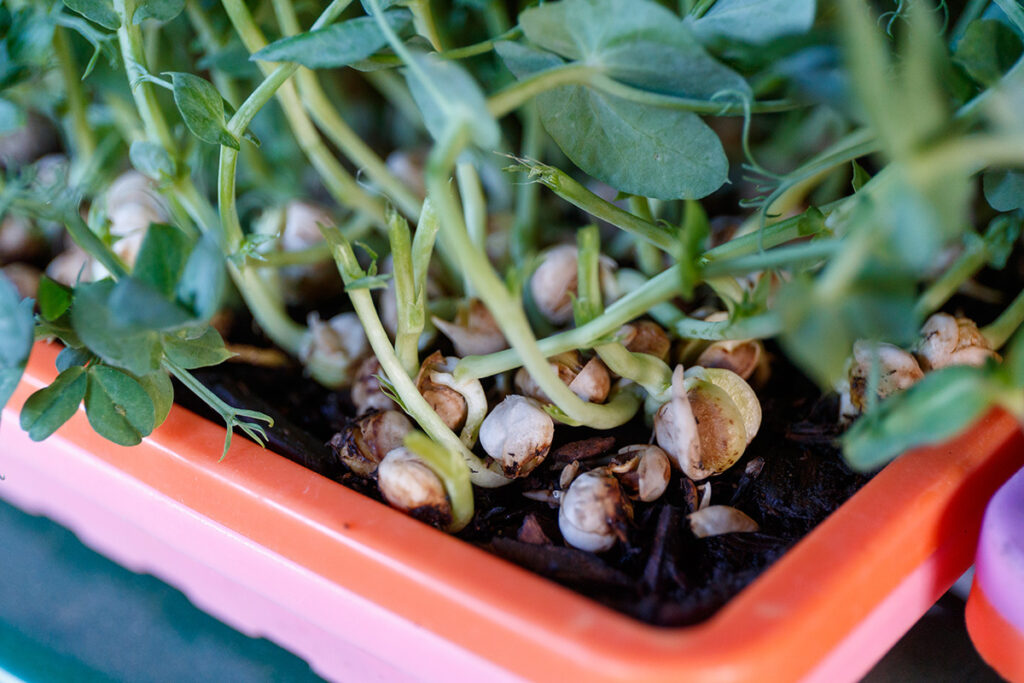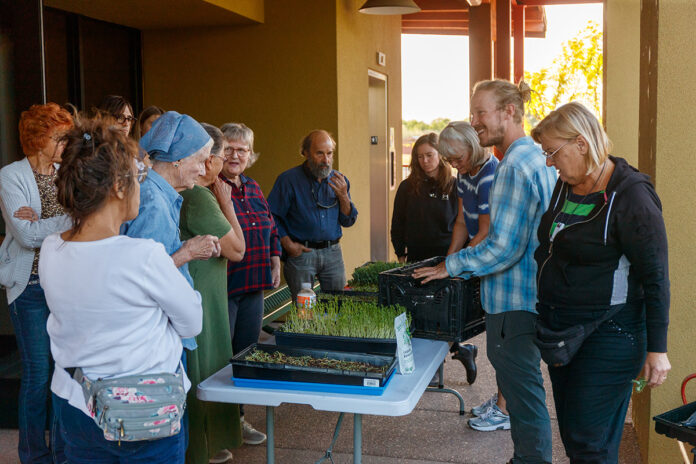Gardens for Humanity presented a workshop on how to grow microgreens with few resources at the Camp Verde Community Library on May 4.
Presented by Ataiyo Viafora from Gardens for Humanity, the program involved a lecture and a hands-on activity, with participants getting to plant their own tray of microgreens. They also got the chance to taste Viafora’s samples of sunflower and pea microgreens.
Viafora explained that sprouts are shoots that have not yet begun photosynthesis and are typically about a week younger than microgreens. Microgreens usually take about two to three weeks to grow, while sprouts take only one week.
Microgreens are nutritionally dense and can be grown quickly in a small space in company with a variety of seeds and beans, including barley, lentils and peas. They offer a faster harvest than growing-full size plants and can be grown almost anywhere.

The process starts with soaking seeds for between 8 and 24 hours until they begin to sprout tendrils, which is similar to soaking seeds in a wet paper towel to pre-germinate them. Viafora advised weighing the amount of seed to be put in each growing tray and using consistently-sized trays. He uses two trays stacked on top of each other, with holes in the top tray to allow water to drain. Yogurt and takeout containers can be recycled as growing trays.
Viafora suggested that growers distribute the seeds over the soil as evenly as possible, since that approach increases yields. In his own growing method, he does not put soil on top of the seeds but weighs them down with additional trays for several days to mimic the effect of soil weight in order to trigger germination.
After removing the weight, the sprouts should be deprived of light for another three days by putting them in a dark room or covering them with another tray. This will allow the stem to grow taller as it is looking for light, a trait desired in microgreens, and in these conditions the greens will grow taller but not broader. They will still need to be monitored and watered during this time. Viafora joked that the greens were similar to babies, in need of constant attention. Once the growing process is complete, he feeds the soil and leftover plants to his worm bin and later reuses the soil in a self-contained process.
Viafora encouraged people to be creative with their growing experiments and reminded them that microgreens can be grown on any scale desired, even year round by taking care to place them where they can catch the winter sun. Certain plants adapted to growing in cold weather, such as radishes, peas and broccoli, can be grown during the colder months, while sunflowers are better adapted to warm weather. Viafora noted that while he wouldn’t grow a pea plant in summer, he could grow pea microgreens in summer if he watered them enough. While he prefers to grow his microgreens in sunlight, they can be housed indoors and grown using natural light or LED grow lights.
Microgreens grow much more densely than they would in nature, which requires regulating heat, airflow and moisture to avoid mold. Due to the fast crop cycle, learning what to adjust for next time is a fast process, allowing for trial and error to fit individual spaces.
Gardens for Humanity will be hosting a vermiculture class, Worm Wrangling 101, on Wednesday, May 31, at 5:30 p.m. at the Camp Verde Community Library.



